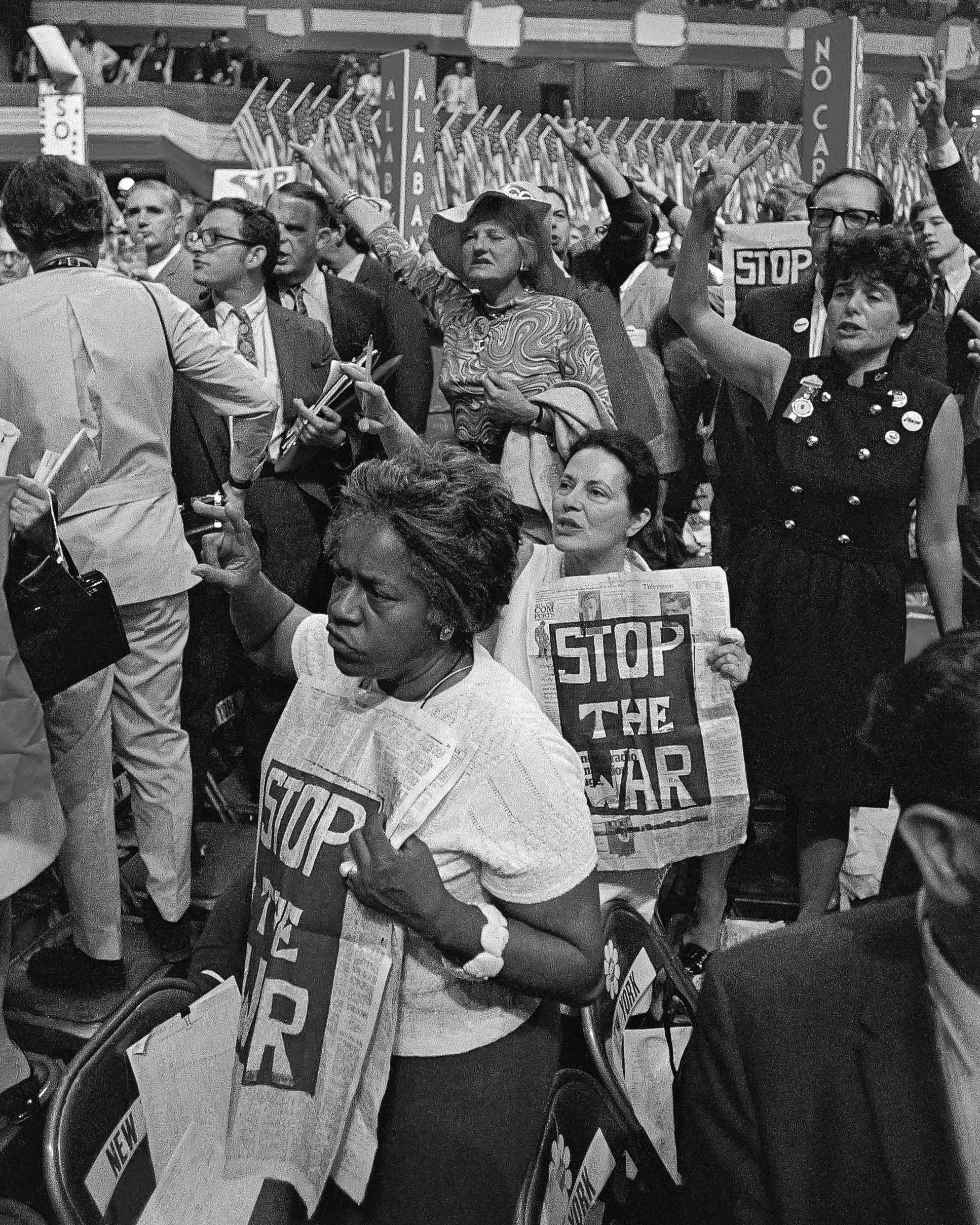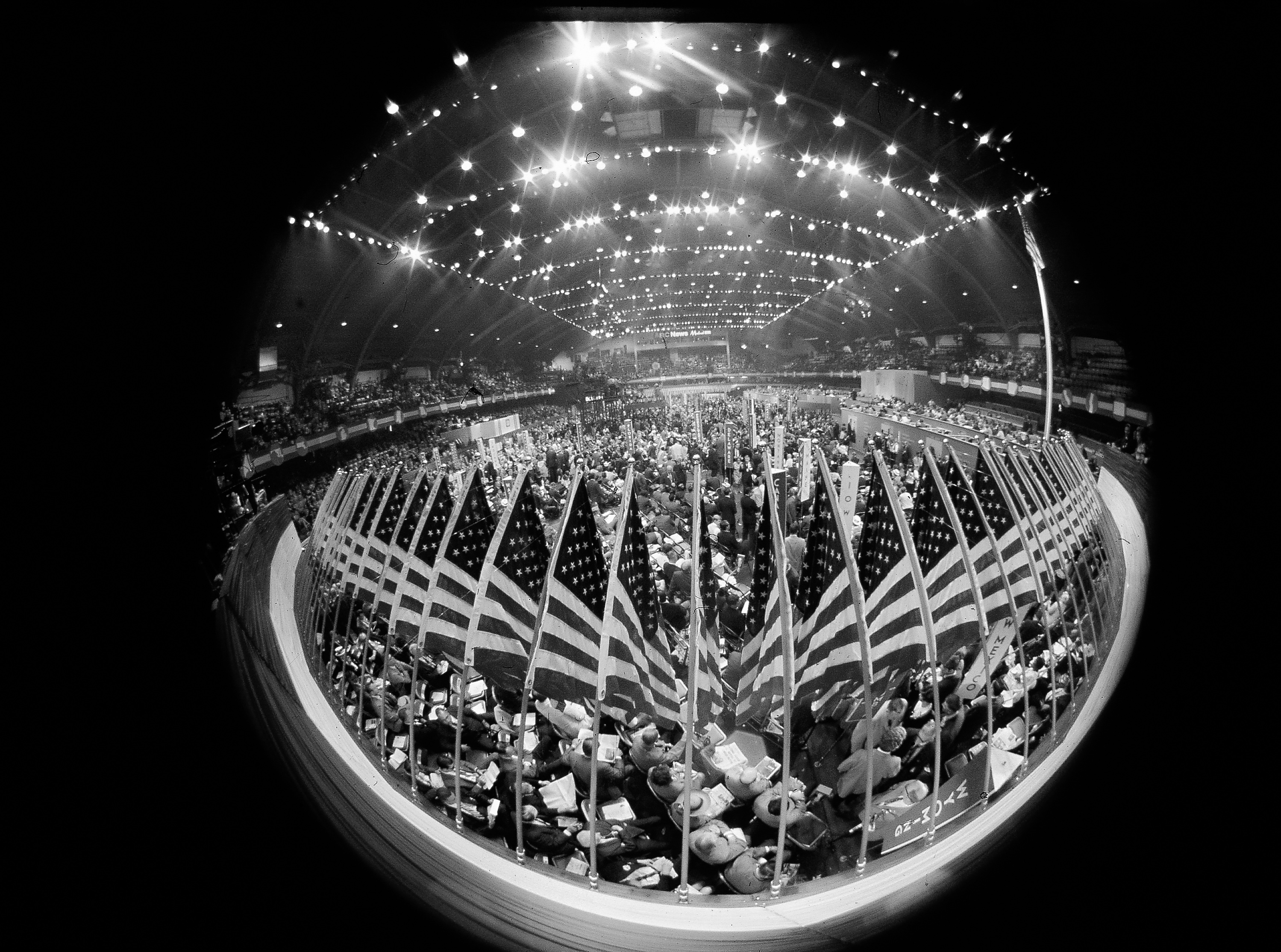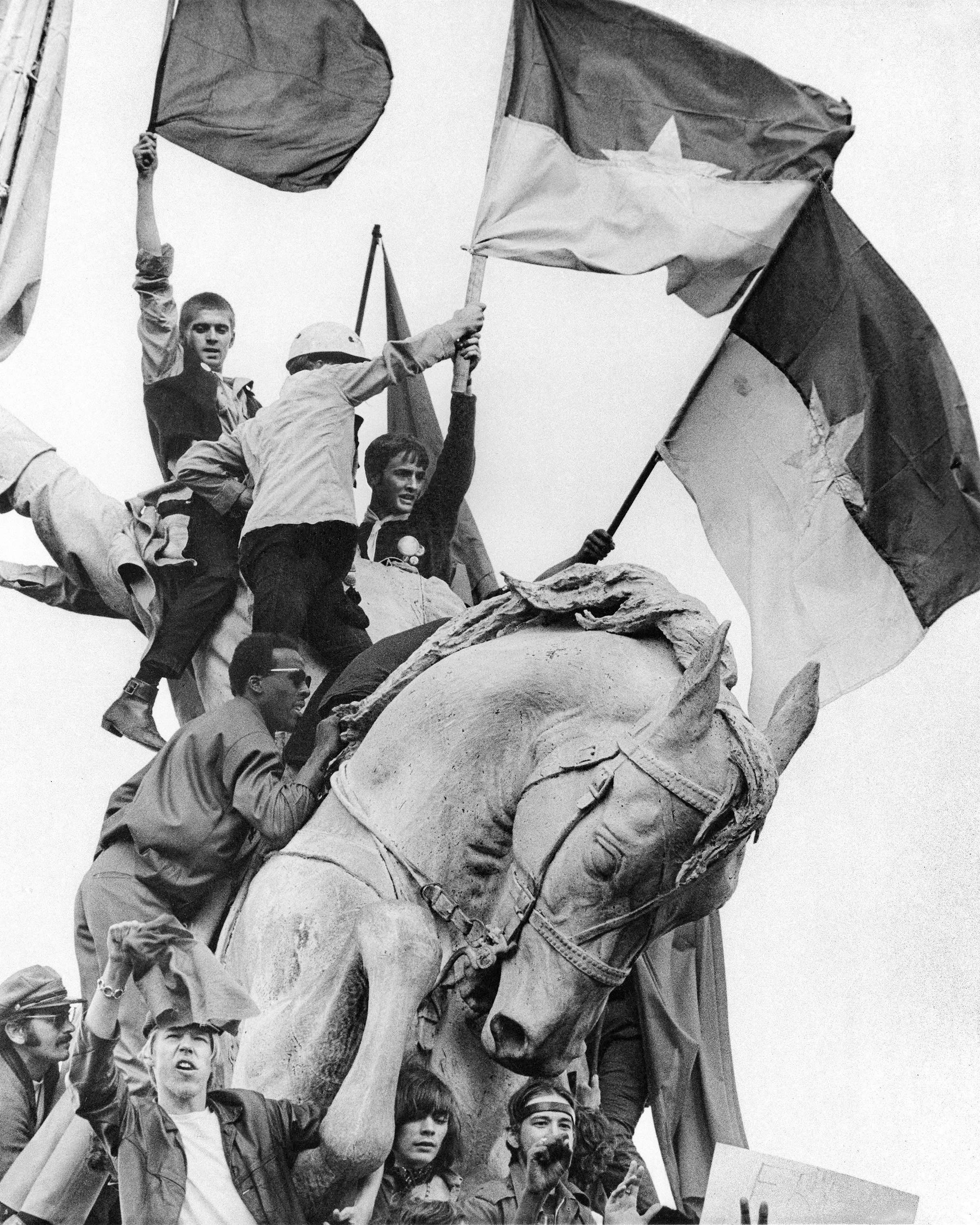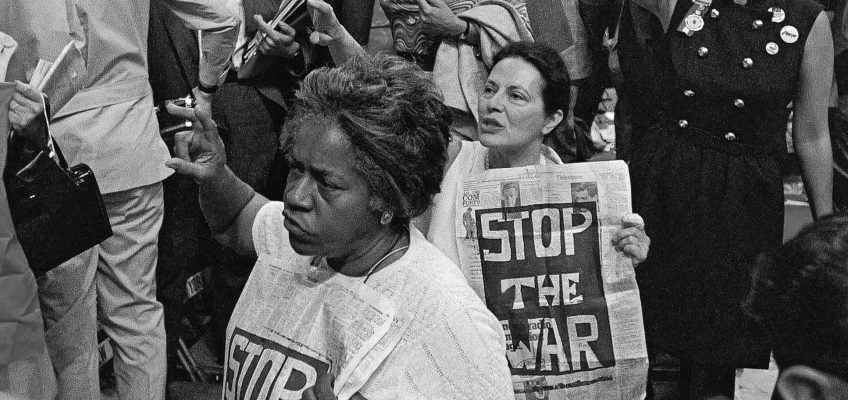
The Democratic Party announced on Tuesday that it would return to Chicago next year for its presidential nominating convention. The Windy City has hosted the Democratic National Convention 11 times, but the 1968 event stands out more than five decades later because of bloody dayslong protests.
Democrats held the convention Aug. 26-29, four months after the assassination of the Rev. Martin Luther King Jr. and as the Vietnam War was raging. The gathering erupted in violence, leading to the activation of the National Guard and the arrest of hundreds of protesters.
The McGovern-Fraser Commission that investigated the violence characterized the event as a “police riot,” and CBS anchorman Walter Cronkite referred to the Chicago police as “thugs” on the air after seeing his reporter Dan Rather beaten on the convention floor.
The party convened to select a new presidential nominee after President Lyndon B. Johnson decided not to seek reelection.

Vice President Herbert Humphrey received Johnson’s support for the nomination. He was challenged by Sens. Robert F. Kennedy and Eugene McCarthy.
But before the convention, Kennedy was assassinated, which resulted in Sen. George McGovern vying for the nomination.
Preparing for the 1968 convention
The day before, many antiwar protesters congregated in Lincoln Park, about 10 miles from the Democratic National Convention.
Mayor Richard J. Daley had initially allowed them to gather but changed his mind that evening. Instead, he ordered the Chicago Police Department to enforce the city’s 11 p.m. curfew, hoping to remove the protesters before the convention began.
Day 1
The event got off to a shaky start. Television cameras were not allowed to live-broadcast the antiwar demonstrations outside the International Amphitheater but could film what was happening on the convention floor.
Day 2
The convention became divided between antiwar protesters and Johnson supporters. That night a prime-time debate on Vietnam was delayed until after midnight, when most Americans would be asleep.

Protesters gathered at a nearby hotel where many of the delegates were staying. Police officers could not keep the peace and Daley sent in troops from the Illinois National Guard, which had been activated by Gov. Samuel Shapiro.
Day 3
The anticipated televised Vietnam debate aired, and thousands of antiwar protesters gathered in Grant Park, where they had a permit to assemble.
The National Guard prevented the protesters from reaching the amphitheater. Later in the afternoon, a teen climbed a flagpole and lowered the American flag, and the police arrested him.
One of the protest organizers, Rennie Davis, told the police that the group had a legal protest permit and requested that the officers leave the park. The officers then beat Davis unconscious.

Another protest organizer, Tom Hayden, encouraged protesters to return to the hotel. However, early in the evening, outside the hotel, police officers began attacking antiwar protesters with billy clubs and tear gas.
Meanwhile, Sen. Abraham Ribicoff, in his nominating speech for McGovern, referred to “Gestapo tactics in the streets of Chicago” as televisions inside the convention hall showed the riots happening outside.
Later at the convention, delegates voted for Humphrey to receive the presidential nomination.
Day 4
The police used tear gas to stop the remaining protesters and antiwar delegates from reaching the amphitheater.
Officers arrested over 650 protesters during the convention.


Leave a Reply